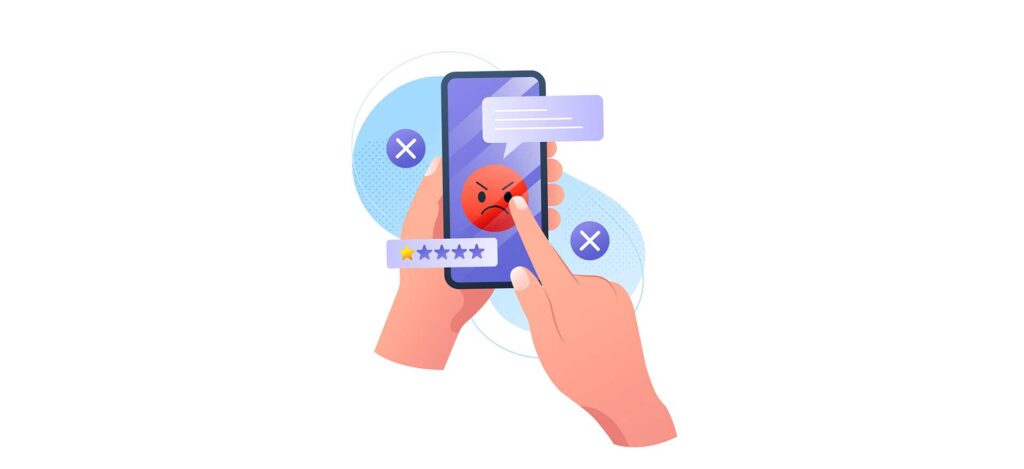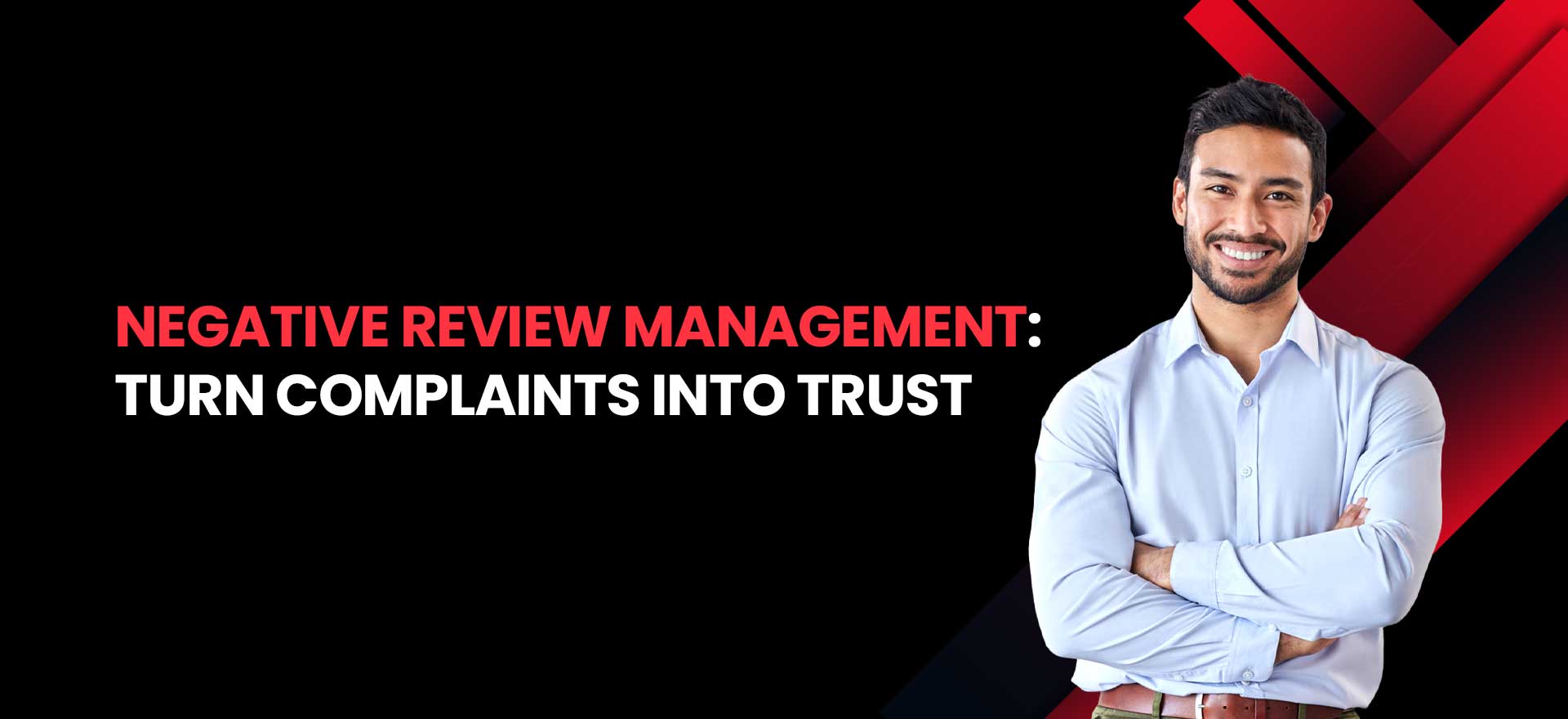It is quite natural to get a bit defensive when a customer leaves negative feedback about your business. After all, the reputation of a brand is at stake. However, when looked upon with the right perspective, one can find ways of how to manage negative reviews and turn them into an opportunity for stronger relationships with customers and improvements in business.
As per one survey, around 94% of consumers would not engage with a business after seeing negative feedback. However, what might feel like a setback can really be a great tool as part of digital marketing. In fact, 52% shoppers are more likely to trust a product that has some negative reviews. Here are reasons why negative feedback can never be the end of the world:
- Opportunity to Fix Broken Experiences and Save Relationships: A negative review gives access to addressing an issue directly, so you can prevent losing a customer. By solving the problem, you can re-establish trust.
- Transparency and Professionalism: Answering a negative review shows how serious you are regarding customer care. Being transparent will earn you their respect and admiration.
- See Patterns and Improve: Negative reviews may put on display things that happen over and over again, and so this is where improvement may occur in product or service delivery.
- Customer Trust: Authenticity is key if you want to rebuild customer trust after bad reviews. When shoppers see how you handle negative feedback, they are more likely to trust your business.
Practical Steps to Handle Negative Reviews

Thinking about how to manage negative reviews? What you need is more than just giving a bland apology. The entire process must be planned thoughtfully and strategically. Here are practical steps for handling complaint management and best practices for answering customer complaints:
-
Don’t Take It Personally
Although defending your brand from personal attack might be very tempting, the reality is that negative reviews are rarely about you-they are more reflections of customer frustration. Most customers leave bad reviews, for deliveries that are too late, unclear policies, or poor service-not anything the customer has done personally. Emotions check, enabling you to look at things more dispassionately for the biggest problem, and how you plan to work through it.
-
Step Back Before You Respond
That’s why it was recommended to put some space between receiving the complaint and writing the reply. This is positive as an impulsive and tense reply might escalate the situation. Experts recommend delaying the response by 15-30 minutes. Such a very small time will help you to address the situation without getting emotional.
For businesses looking to manage their online reputation, Social Media Marketing Agency in Dubai and Digital Marketing Agency in Dubai can provide the expertise to help turn feedback into trust.
-
The Customer’s Point of View
Empathy goes a long way. What is happening? Could it be a miscommunication? What parts of your process failed to meet their expectations? Understanding their perspective will help you address the root cause of their frustration, not just the symptoms.
-
Do Your Homework
Collect all relevant details before replying. The customer’s order history, purchase path, and shipping reason logs need to be reviewed so that the answer can be factual and demonstrate you have duly investigated the case at hand. Now you can easily convert negative reviews into positive outcomes.
-
Always Reply-Professionally
Negotiating by e-mail has become common nowadays, and 88% of customers are less likely to purchase from a brand that ignores complaints on social networking sites. Responding right away, even if the review is negative, sends a message that your business listens. Keep your tone professional, avoiding a template reply; rather, personalize your responses to the specifics of the complaint.
-
Let Negative Reviews Be Seen-Use Them
Transparency earns trust. A wise and constructive response to negative reviews will assure potential customers of your honesty and proactivity. Here is an example of how your response can look:
“We sincerely appreciate your feedback. We regret to hear that your experience was such. The issue has been addressed, and we would like to make things right.”
Also, understanding LinkedIn B2B Lead Generation Guide and the Best Time to Post on Instagram can further boost your online presence and engagement.
-
Encourage Edits (If the Issue Is Resolved)
When your customer is satisfied with the way you resolved their complaint, you should ask whether they would mind updating their review. More often than not, if they’re happy with the outcome, they will gladly change their reviews.
-
Internally Disperse Feedback
Because they represent a series of learning opportunities, negative reviews should be examined and analyzed thoroughly to identify any trends; that feedback should then be shared with internal teams dealing with product, logistics, and customer support. This allows for possible enhancements of processes in order to prevent similar complaints from occurring in the long run.
-
Nudge for Good Reviews
For credibility’s sake, a review profile with both good and bad reviews looks trustworthy. Invite satisfied customers to leave reviews proactively. Automated review request tools by services like REVIEWS.io will help you put together a database of positive reviews to dilute the effect of unfair negative ones.
Negative Reviews Are Good

Let’s face it: not many find the negative feedback to be felt good. Nevertheless, if handled right, it harbors quite a few advantages. The following are positive reasons for judging negative reviews:
-
Save Customer Relationships
By responding quickly and professionally, you can transform dissatisfied customers into loyal ones. Research shows that 95% of customers will return to a business if their concerns are addressed effectively.
-
Increase Consumer Trust
Interestingly, a few negative reviews can actually make your business seem more trustworthy. Shoppers are skeptical of perfect ratings, and many feel that a few negative reviews are more credible than an entirely glowing set of testimonials.
-
Opportunities for Improvement
Negative reviews can highlight areas for improvement, whether it’s in your customer service, shipping process, or product quality. Use this feedback to enhance your offerings and avoid repeating mistakes.
-
Evidence for Internal Improvements
Customer feedback can support arguments for internal changes, whether it’s advocating for a better return policy or investing in better customer support resources. Negative reviews often bring attention to issues that need to be addressed.
-
Informing Potential Customers
A negative review can help guide other potential customers toward the products or services that are a better fit for them. By addressing the issue publicly, you give future customers a more informed decision-making process, ultimately leading to greater satisfaction and reduced returns.
Your Ready-to-use Checklist to Reply to Negative Feedback
Here’s a quick checklist to follow when responding to negative reviews:
- Say Thank You: Show appreciation for the feedback.
- Apologize: Sincerely apologize for any inconvenience caused.
- Personalize Your Response: Avoid generic replies—address the specifics of the issue.
- Offer a Solution: Provide actionable steps to resolve the problem.
- Reiterate Your Company Ethos: Assure customers that their experience was an exception.
- Offer a Follow-Up: Provide a way for them to reach you if they need further assistance.
- Avoid Profanity or Compensation Mentions: Handle compensation privately and maintain professionalism at all times.
Conclusion
Negative reviews don’t have to be a death knell for your business. When managed effectively, they can serve as opportunities for growth, customer loyalty, and brand authenticity. By implementing these best practices, you can turn complaints into valuable lessons that not only improve your operations but also strengthen your relationships with customers.



